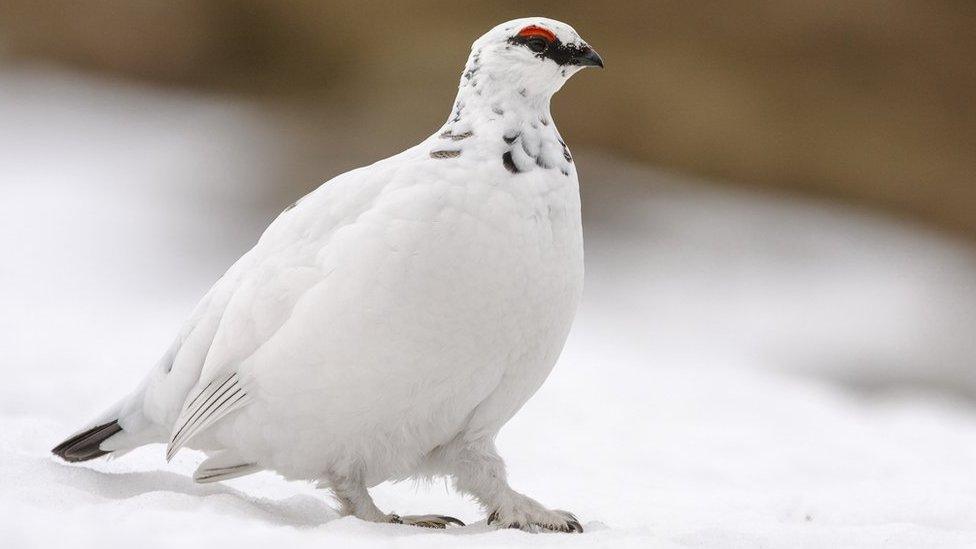Warning of 'sharp decline' in Scotland's ptarmigan
- Published

Ptarmigan have plumage that turns white in autumn
Conservationists have warned of a "sharp decline" in ptarmigan.
In the UK, the birds - which have plumage that turns white in autumn - only breed on high mountains in the Scottish Highlands.
RSPB Scotland said there had been an 81% decline in numbers since 1961, and the birds had been moved from a green list species straight to a red.
Ptarmigan are among 70 species on the updated UK Red List for birds, external, which also includes greenfinches and swifts.
Red list species are threatened globally or have suffered severe declines in numbers in the UK over periods of time.
RSPB Scotland is among the organisations that maintains the list, which was last updated in 2015.
The charity said that due to a lack of formal surveys it was difficult to understand the reasons behind the fall in numbers of ptarmigan.
RSPB Scotland said the move to the red list highlighted the "urgent need" for dedicated surveys of abundance, distribution and habitat to begin work to reverse the fortunes of the species.
Places where ptarmigan are found include the Cairngorms.

White-tailed sea eagles have moved from red to amber
Leach's storm petrel, a nocturnal seabird which occurs only in Scotland, nesting in burrows on islands, has been added to both the UK Red List and the International Union for Conservation of Nature list of species that are globally threatened with extinction.
But white-tailed sea eagles have moved from red to amber on the UK list following conservation efforts.
The charity's Jen Smart said: "Ptarmigans are an iconic montane species that we know relatively little about, so simply understanding more about their numbers and distribution will be the first step towards helping this species."
She added: "White-tailed eagles moving off the red list is, of course, a reason to celebrate what concerted conservation efforts can achieve and what the presence of these iconic raptors contributes to rural economies."
Related topics
- Published20 August 2021
- Published11 June 2021

- Published20 March 2012
